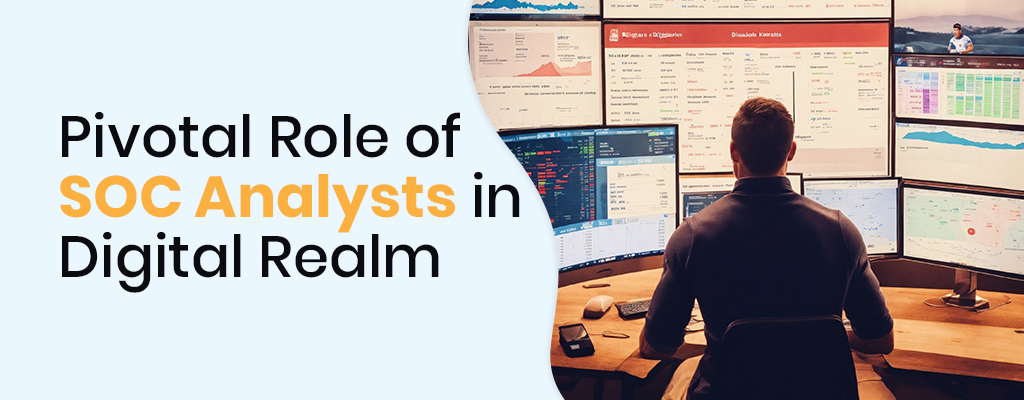Importance Of Security Operation Center Analysts

In today’s digital age, nearly every aspect of our lives operates in the digital realm. From the article you are currently reading to our everyday activities, digitalization has become imperative. With the pervasive influence of digitalization and globalization, ensuring the security of data, networks, and systems has become paramount. This necessity underscores the need for a Security Operations Center (SOC) Analyst within organizations. SOC analysts play a pivotal role in monitoring and analyzing security events and incidents across networks and systems. Their proactive approach is instrumental in identifying and promptly responding to potential security threats and breaches.
The Key responsibilities of SOC Analysts includes:
- Monitoring and analyzing security events and incidents.
- Investigating and responding to potential security threats and breaches.
- Conducting vulnerability assessments and penetration testing.
- Developing and implementing security measures and protocols.
- Collaborating with cross-functional teams to enhance security posture.
Process to handle incident response in a SOC
Identify the Incident
- Monitor security systems and alerts to identify potential security incidents.
- Conduct analysis and investigation to determine the nature and severity of the incident.
Contain the Incident
- Isolate affected systems or networks to prevent further spread of the incident.
- Implement security controls and measures to limit the impact of the incident.
Eradicate the Incident
- Remove the root cause of the incident and eliminate any malicious presence or activity.
- Patch vulnerabilities and strengthen security defenses to prevent similar incidents.
Recovery and Lessons Learned
- Restore affected systems and networks to normal operations.
- Conduct post-incident analysis and documentation to identify lessons learned and improve incident response processes.
Key Tools for Threat Hunting
- SIEM (Security Information and Event Management) Systems: These systems collect and analyze security event data from various sources to identify potential threats.
- Endpoint Detection and Response (EDR) Tools: These tools monitor and analyze endpoint activity to detect and respond to advanced threats.
- Network Traffic Analysis (NTA) Tools: These tools monitor network traffic to detect anomalies and potential threats.
- Threat Intelligence Platforms: These platforms provide information on known threats and indicators of compromise to aid in threat hunting.
- Log Analysis Tools: These tools analyze log data to identify patterns and indicators of potential threats.
- Sandbox Environments: These environments allow for the safe execution and analysis of potentially malicious files and URLs.
False positives and True Positives
False Positive: A false positive refers to a situation where a security system or tool incorrectly identifies a harmless activity or event as malicious or abnormal. This can occur when the system’s rules or algorithms generate a false alarm, leading to unnecessary investigations or actions. False positives can be caused by various factors, such as misconfigurations, outdated threat intelligence, or limitations in the system’s detection capabilities.
True Positive: A true positive, on the other hand, occurs when a security system or tool correctly identifies a genuine security threat or malicious activity. It indicates that the system’s detection mechanisms are functioning effectively and accurately identifying real security incidents. True positives are crucial for identifying and responding to actual threats, enabling timely incident response and mitigation.
In essence, SOC Analysts are indispensable guardians of digital security. Their proactive approach, coupled with specialized skills and advanced tools, ensures swift detection and mitigation of potential threats. By navigating the complexities of false positives and true positives with precision, they uphold organizational resilience while safeguarding critical assets in an ever-evolving digital landscape.